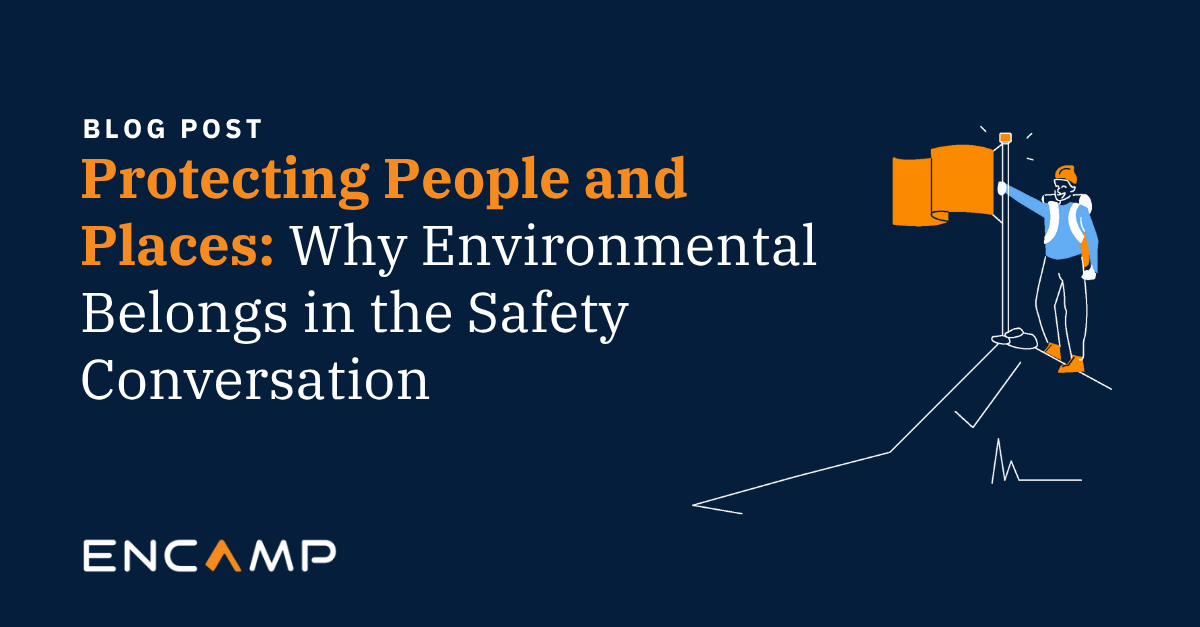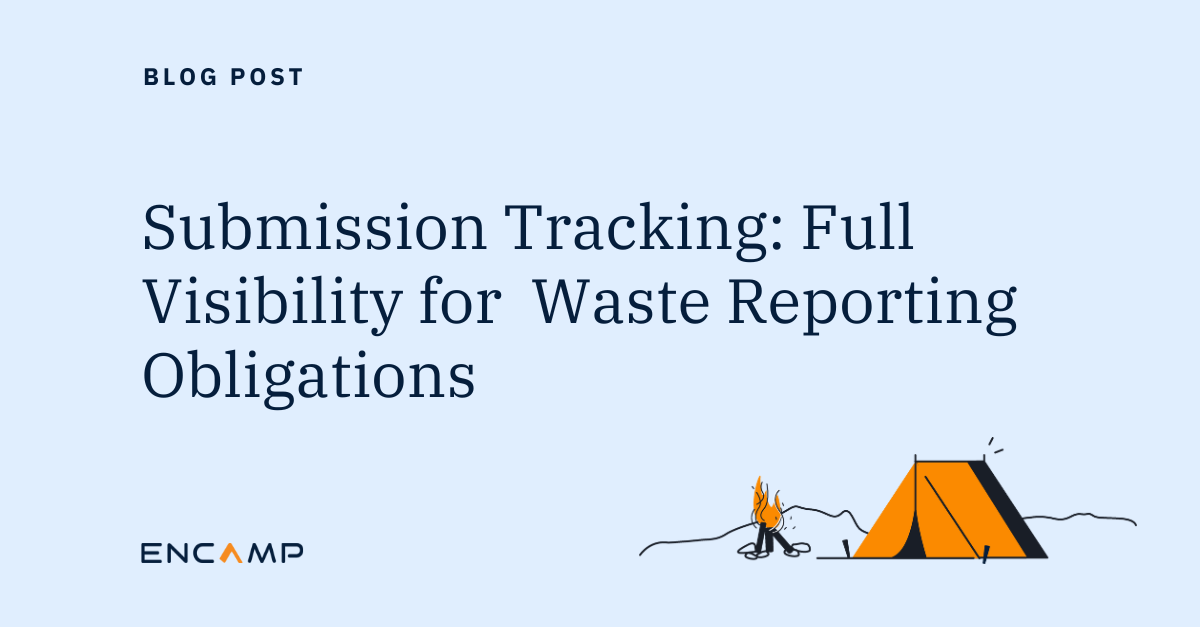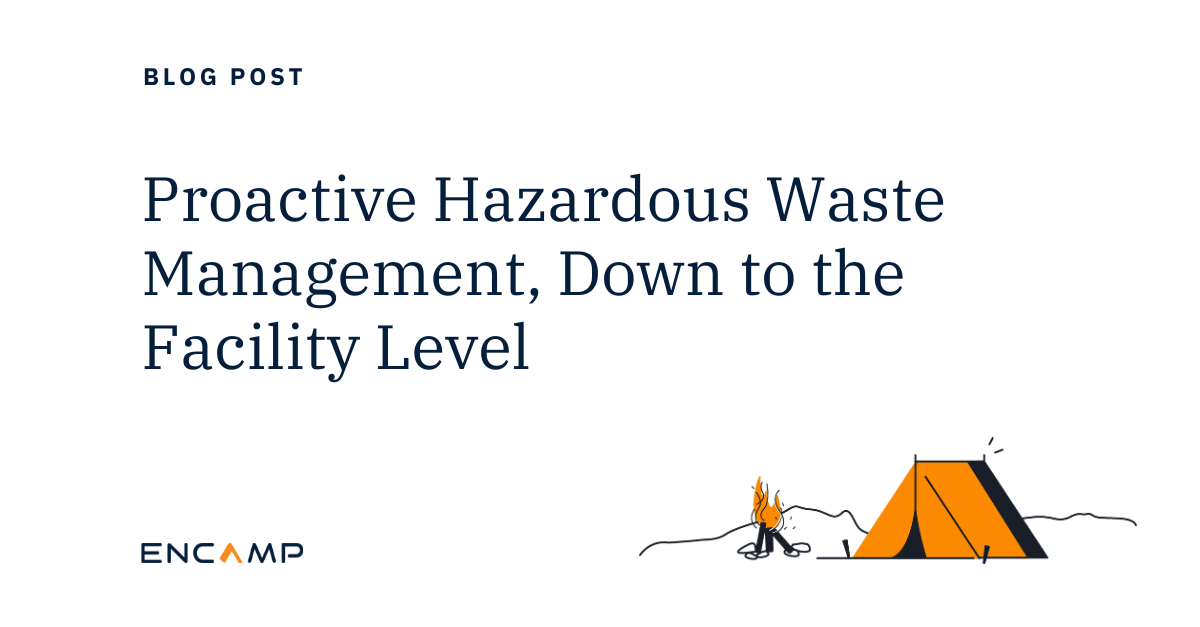The Emergency Planning and Community Right-to-Know Act — EPCRA — was passed in 1986 in response to chemical-related safety and environmental concerns in communities throughout the U.S. Specifically, the concerns stemmed from hazardous chemicals stored and handled in facilities located in these local communities.
EPCRA in simple terms
Since 2018, Encamp’s Tier II Reporting software for section 312 EPCRA compliance has made us the EHS industry’s largest third-party filer of Tier II reports. Compliance reporting is also one of the critical steps in Encamp’s Guided Environmental Compliance method that integrates digital technology into compliance program areas to centralize information, make data more visible, and build a continuous and auditable process for EHS operations. This guided method also blends Encamp’s high-tech software with the high-touch support of our compliance experts, who know the in’s and out’s of EPCRA and its sections that set regulatory provisions for regulated facilities within a local jurisdiction.
Yet given the complexities of EPCRA, we get questions about it virtually every day. Especially for Tier II and reporting, here’s what you should know about EPCRA… in simple terms. Call it our way of helping you and your EHS team avoid the common reporting errors we see companies make every year in their Tier II filings.
Glossary
- EHS – Extremely hazardous substance
- EPCRA – Emergency Planning and Community Right-To-Know Act
- TPQ – Threshold Planning Quantity
- LEPC – Local Emergency Planning Committee
- SERC – State Emergency Response Commission
- TERC – Tribal Emergency Response Commission
- RQ – Reportable Quantity
- MSDS – Material Safety Data Sheet
- SDS – Safety Data Sheet
- TRI – Toxics Release Inventory
Why is the “Community-Right-to Know” section of EPCRA so important?
Community Right-to-Know provisions help increase the public’s knowledge and access to information on chemicals stored at individual facilities, their uses, and releases into the environment. States and communities, working with facilities, use the information to improve chemical safety and protect public health and the environment.
SERC, TERC and LEPC roles
Gotta love all the acronyms, right? At the state level is a State Emergency Response Commission (SERC), or where applicable, a Tribal Emergency Response Commission (TERC). A Local Emergency Planning Committee (LEPC) resides on the local level in each community within a state.
The duties of SERCs and TERCs
The SERC supervises and coordinates the activities of the LEPC, establishes procedures for receiving and processing public requests for information collected under EPCRA, and reviews local emergency response plans. In regards to TERCs, the Chief Executive Office of the Tribe appoints the commission’s members; TERCs have the same responsibilities as SERCs.
What LEPCs do
LEPCs are composed of local officials including police, fire, civil defense, public health, transportation, and environmental professionals. Also serving on these committees are representatives of facilities subject to the emergency planning requirements, as well as community groups and the media. LEPCs must develop an emergency response plan, review it annually (at a minimum), and provide information about chemicals stored or used in the community to local citizens.
EPCRA sections and their four key provisions
EPCRA entails four core responsibilities for chemical use and storage, classified by sections. These sections apply to all regulated facilities within a local jurisdiction.
- Sections 301-303, Emergency Planning. These sections require local governments to prepare chemical emergency response plans in their jurisdiction, as stated in the LEPC summary above. Such plans must be reviewed at least annually to remain in EPCRA compliance.
- Section 304, Emergency Notification. This section requires facilities to immediately report accidental releases of hazardous substances and extremely hazardous substances (EHSs). Reports are submitted to local officials as well as the state. Further reporting might also be required. Section 304 ensures local governments the ability to protect human health and the environment in a spill clean-up.
- Sections 311-312, Community Right-to-Know Requirements. These sections require facilities that store hazardous chemicals to submit corresponding Safety Data Sheets (SDSs). SDSs must be filed with the state, local officials, and local fire departments. If a facility’s chemicals exceed defined quantity thresholds, facilities must additionally submit an inventory report. Inventory reports are filed with the same officials and fire departments. EPCRA Sections 311-312 help local and state agencies prepare for the possibility of a chemical emergency at a facility.
- Section 313, Toxics Release Inventory (TRI). TRI tracks the management of certain toxic chemicals that can pose a threat to human health and the environment. Facilities in various industry sectors must report annually how much of each chemical is released to the environment and/or managed through recycling, energy recovery, and treatment.
A fifth EPCRA section is section 322, Trade Secrets. For companies that wish to claim trade secrets for chemicals reported under EPCRA, EPA requires a facility to submit a substantiation to justify the claim of trade secrecy as specified in Title 40 of the Code of Federal Regulations (CFR), parts 350 to 372. The section 322 form has four parts:
- Part 1. Substantiation Category
- Part 2. Facility Identification Information
- Part 3. Responses to Substantiation Questions
- Part 4. Certification
See EPA’s EPCRA website for more in-depth sections information, frequently asked questions, and guidance documents.
Tier II falls under EPCRA section 312
Tier II reporting is housed under EPCRA section 312. For regulated facilities, the requirements of this section dictate that facilities submit an annual inventory of hazardous chemicals onsite that surpass a stated quantity threshold. Thresholds are federally mandated, but can be superseded by state or local requirements. Chemical inventories are submitted to the facility’s SERC (or TERC), LEPC, and local fire department.
Section requirements in more detail
Sections 301-303, Emergency Response plan guidelines
LEPCs are tasked with emergency response planning and notification for their communities, which directly involves the facility that stores extremely hazardous substances. You must comply if your facility meets the following conditions:
- Any EHS is present in an amount equal to or greater than its threshold planning quantity (TPQ).
- Has been designated for emergency planning purposes, after public notice and opportunity for comment, by the SERC, State Governor, or the Chief Executive Officer of the Tribe for the Indian Tribe under whose jurisdiction your facility is located
Emergency Response plans contain information that community officials can use at the time of a chemical accident.
- Transportation routes of EHSs
- Emergency response and notification procedures
- Evacuation plans
- Training program and schedules for responders
A response plan report must include:
- Emergency planning notification
- A designated facility emergency coordinator
- Changes relevant to emergency planning
- Requested information if the LEPC requests it
Section 304, emergency notification guidelines
Emergency notification reports must be submitted immediately to officials at both the local (LEPC) and state (SERC, TERC) levels whenever a facility accidentally releases hazardous substances and/or EHSs.
Substances include any of the EPA’s listed types of chemicals in an amount equal to or greater than its reportable quantity.
Regulated chemicals include ammonia and hydrogen peroxide and any substance in Appendix A of the EPA hazardous substances list, or formaldehyde, nicotine, and any substance included in Appendix B.
An emergency notification report must include:
- The chemical name
- An indication of whether the substance is extremely hazardous
- An estimate of the quantity released into the environment
- The time and duration of the release
- Whether the release occurred into air, water, and/or land
- Any known or anticipated acute or chronic health risks associated with the emergency, and where necessary, advice regarding medical attention for exposed individuals
- Proper precautions, such as evacuation or sheltering in place
- Name and telephone number of contact person
Sections 311-312, thresholds and reporting requirements
Again, Tier II reporting is a section 312 requirement. Per Occupational Safety and Health Administration (OSHA) regulations, facilities must maintain an MSDS or SDS for any hazardous chemical used or stored in the workplace.
Regulated chemicals:
Note that these guidelines apply at the federal level. States may have a lower threshold.
- EHSs listed in Appendix A and Appendix B with a TPQ of 500 lbs or less
- Gasoline at a retail gas station, with a threshold level of 75,000 gallons
- Diesel fuel at a retail gas station, with a threshold level of 100,000 gallons
- All other hazardous chemicals with a TPQ of 10,000 pounds.
A Tier II report must include:
- The chemical name or the common name as indicated on the MSDS or SDS
- An estimate of the maximum amount of the chemical present at any time during the preceding calendar year and the average daily amount
- A brief description of the manner of storage of the chemical
- The location of the chemical at the facility
- An indication of whether the owner of the facility elects to withhold location information from disclosure to the public
Section 313, Toxics Release Inventory (TRI) guidelines
As a mandatory program for toxic chemical releases and pollution prevention activities reported by industrial and federal facilities, TRI typically applies to larger facilities involved in manufacturing, chemical manufacturing, or hazardous waste treatment. Currently, more than 21,000 facilities around the U.S. are subject to TRI requirements, which is determined by your facility’s NAICS Code, number of full-time employees, and chemical thresholds.
Verify if your facility is a TRI-covered industry.
In all, TRI examines wastewater discharges, air emissions through stacks, air flow through doors and windows (fugitive air release), off-site transfer of waste or by-products to landfills or recycling facilities, and surface water discharge like storm water. TRI reports are due annually on July 1st.
Regulated chemicals:
Chemicals covered by the TRI program are those that cause cancer or other chronic human health effects, significant adverse acute human health effects, and significant adverse environmental effects. See TRI chemical changes as of January 2022.
Additional EPA resources
List of Lists
Updated Tier II forms and instructions
State-specific Tier II reporting instructions and procedures
Important schedules and due dates
Note that these are federal schedules. For sections 302 and 304, states may have more stringent timelines.
- Section 302 notifications are due within 60 days after receiving a chemical shipment or producing a hazardous substance
- Section 304 release notifications must be made immediately
- Section 312 Tier II reports must be filed annually by March 1st (in most states)
- Section 313 TRI is due annually on July 1st
Transforming the way enterprises stay in compliance
Encamp is on a mission to create a world where good for business can equal good for the environment. We help enterprises transform compliance programs and human processes into a technology-driven system that lays the foundation for accurate and ongoing environmental compliance through a blended method of intelligent high-tech solutions and high-touch expert support.
Megan Walters
Megan is Encamp’s VP of Compliance & Customer Success and formerly a Senior Environmental Scientist. But she’s also a Certified Environmental and Safety Compliance Officer® (CESCO), an EHSMS Internal Auditor, a Certified Hazardous Materials Manager, eRailSafe certified, a HAZWOPER 40 Hour - Emergency Response Technician, and skilled in RCRA, DOT, and ISO 14001. Obviously, she knows “compliance.”



